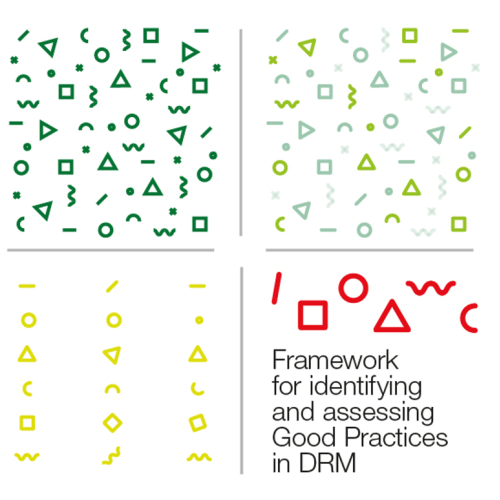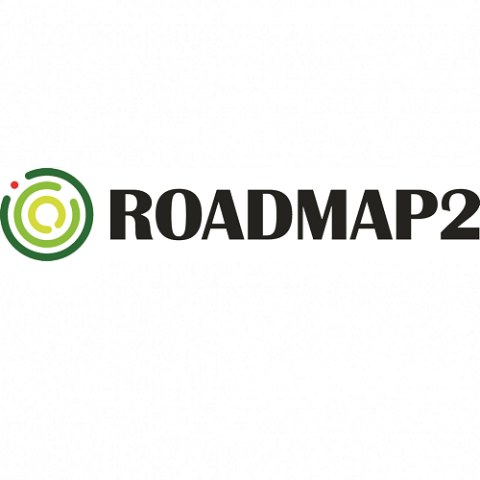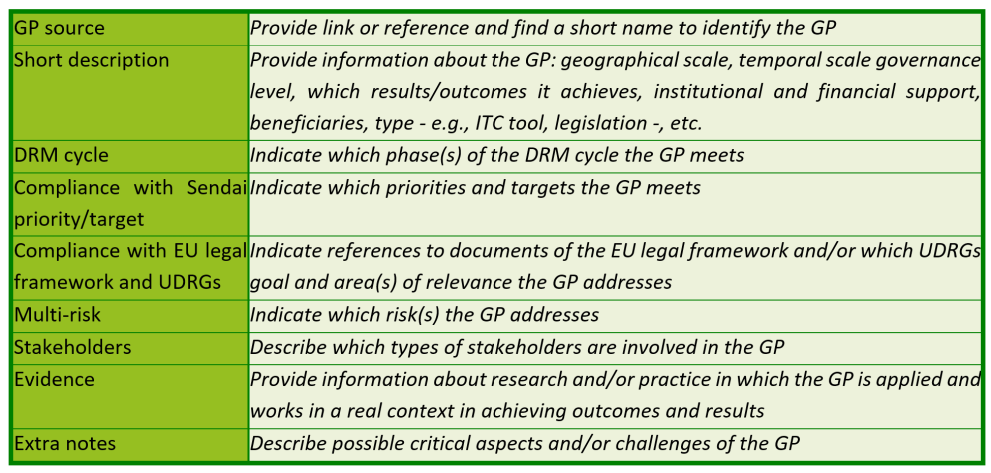Introduction
The ROADMAP2 project has developed a framework for identifying and assessing Good Practices (GPs) in Disaster Risk Management (DRM). The ROADMAP2 Framework is the result of an extensive literature review of relevant approaches, methods and criteria for GPs assessment at the international level, as well as of the advice from the Community for the European Observatory of Good Practices (CEO) that is part of the project.
The ROADMAP2 Framework establishes certain identification criteria stemming from the Sendai Framework for Disaster Risk Reduction (United Nations, 2015) and the Union Disaster Resilience Goals (European Commission, 2023a; 2023b).
The end users of the ROADMAP2 Framework mainly consist of the European Union’s Civil Protection, European national/regional/local civil protection authorities, first responders and actors working within Disaster Risk Management (DRM) and Disaster Risk Reduction (DRR).
The ROADMAP2 Framework provides, as well, a workable definition of GPs within DRM:
Good Practices include Disaster Risk Management actions that reduce disaster risks for the targeted population. These Good Practices have been shown, through research and/or practice, to be effective, reachable, environmentally sustainable, relevant, impactful, and potentially transferable to other contexts.
This definition:
- uses the term “actions”, which includes activities, measures, procedures, methods, and tools;
- does not imply that a GP must meet all six assessment criteria but, by including several criteria from the sources mentioned above, a holistic assessment of what constitutes a GP is allowed;
- emphasises the importance of evidence, whether through research or practice. This evidence-based approach is crucial for ensuring that GPs are not merely theoretical concepts but have proven to work;
- ultimately depends on its application and how well it serves the specific needs and goals of the ROADMAP2 Framework in the context of civil protection and DRM.
The ROADMAP2 Framework
The above workable definition of GPs sustains the process of identifying and assessing GPs in DRM through the ROADMAP2 Framework, which consist of two phases. Each phase contains a series of so-called Building Blocks.
Phase 1 deals with the “Identification” process and requires knowing the setting or general premises within which GPs are harvested. Once the general premises are clear, a certain amount of identification criteria is stablished, stemming from these general premises. Phase 2 regards the “Assessment” process, where identified potential GPs are assessed.
The “Identification” phase includes three Building Blocks: 1.1 Setting; 1.2 Identification criteria; 1.3 Community for the European Observatory of GPs in DRM (CEO).
The Building Block 1.1 Setting consists of laying the setting or general premises of the Framework within which the GPs are identified according to the ROADMAP2 project: GPs within DRM should 1) adhere to the Sendai Framework; 2) embrace a multi-risk perspective. In addition, following the latest EU policy developments, these GPs should 3) serve the objectives of the Union Disaster Resilience Goals.
The Building Block 1.2 Identification criteria considers to what extent the GPs cover the DRM cycle, adhere to the priorities and targets of the Sendai Framework, adhere to the UDRGs, consider a multi-risk perspective, have been applied and work in a real context, and involve different types of stakeholders.
The Building Block 1.3 Community for the European Observatory of GPs in DRM (CEO) considers the CEO experts as a main support to help identify GPs.
The “Assessment” phase aims at assessing the potential GPs resulting from the Phase 1. Phase 2 includes three Building Blocks: 2.1 GPs assessment criteria; 2.2 Methods of assessment of GPs; 2.3 Feeding the solutions explorer with GPs.
The Building Block 2.1 GPs assessment criteria proposes the following assessment criteria: effectiveness, reach, environmental sustainability, relevance, impact, transferability.
The Building Block 2.2 Methods of assessment of GPs provides for three main methods of assessment of GPs: 1) webinars, 2) collaborative workshops with DRM stakeholders, and 3) local exercises. These methods are proposed by the ROADMAP2 project, but several other methods can be applied. This, however, does not jeopardize the functionality of the ROADMAP2 Framework, which can be used with or without Building Block 2.2.
Building Block 2.3 Feeding the Solutions Explorer with GPs is the final step, where the GPs resulting from the work in the previous Building Blocks are finally uploaded in the Solutions Explorer, a web portal developed in the ROADMAP project and improved in ROADMAP2 project, where GPs can be uploaded.
As the template shows, the assessment criteria are addressed by overall questions, which mirror their definition, to be answered by the stakeholders. These questions are deliberately broad to be applicable to a wide variety of stakeholders and practices. They allow emphasising criteria that are particularly relevant in the assessment of a specific GP.
The template includes three assessment options (low, medium, high), which encourage stakeholders to formulate a critical judgement on the GPs.
A GP does not need to meet all 6 assessment criteria to be considered workable and good.




